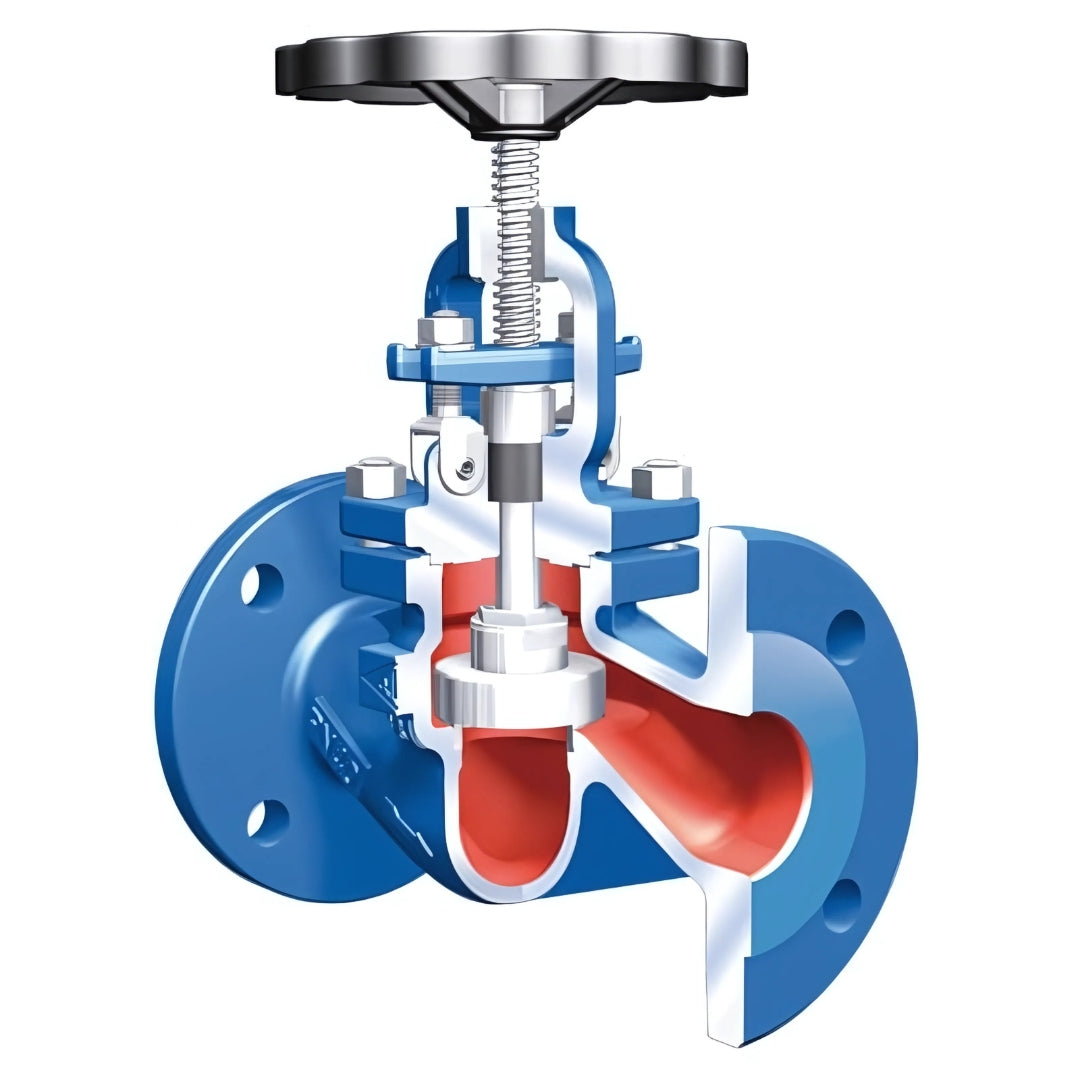Steam Valves
Ari Armaturen STOBU Gland Packed Globe Valve (Flanged PN25, Nodular Iron Body)
Ari Armaturen STOBU Gland Packed Globe Valve (Flanged PN25, Nodular Iron Body)
Couldn't load pickup availability
The STOBU Gland Packed Globe Valve with PN25 flanged ends and a nodular cast iron body is a reliable and cost-effective solution for controlling flow in medium-pressure pipelines. Featuring a linear globe-style flow path, this valve enables precise modulation and effective shut-off for steam, liquids, and gases — making it ideal for heating systems, water networks, and general industrial applications.
The nodular iron body, also known as ductile iron, offers excellent mechanical strength, shock absorption, and resistance to temperature variation. The PN25 pressure rating supports a wide range of process conditions, while the gland packing system ensures a tight seal around the rising stem, preventing leakage and allowing for easy in-service adjustments. With flanged ends for standardised installation, this STOBU valve provides dependable performance and long service life in both on/off and throttling applications.
Manufactured by ARI Armaturen, this valve combines German-engineered precision with rugged dependability, making it a smart choice for everyday process control.
Key Features
Nodular Iron Body
Strong and ductile material ideal for thermal and pressure cycling in general-purpose systems.
PN25 Flanged Connections
Supports medium-pressure installations up to 25 bar with standardised bolting.
Gland Packed Stem Seal
Proven sealing method with adjustable packing for easy maintenance and extended lifespan.
Linear Globe Valve Design
Offers accurate control of flow and reliable shut-off in both clean and slightly contaminated media.
Thermal and Mechanical Resilience
Performs well in heating circuits, district energy systems, and process lines.
Versatile Application Range
Suitable for water, steam, condensate, and neutral process fluids in industrial and commercial systems.
Share

FAQ's
What is the difference between a valve and an actuator?
What types of actuators are available?
The main types of actuators are:
Pneumatic actuators – use compressed air for fast, reliable operation.
Electric actuators – use electrical power for precise control.
Hydraulic actuators – use fluid pressure for high-torque applications.
Each type offers unique advantages depending on the environment, media, and system control needs.
How do I choose the right actuator for my valve?
To select the correct actuator, consider:
Valve type and torque requirement
Power source available (air, electric, or hydraulic)
Operating environment (temperature, humidity, hazardous area)
Control signal type (on/off or modulating)
Matching actuator torque and compatibility with the valve’s ISO mounting ensures reliable performance.
What are the main types of valves used in automation?
The most common valves in automated systems include:
Ball valves – for tight shutoff and quick operation.
Butterfly valves – for larger flow control with compact design.
Globe valves – for precise throttling and flow regulation.
Check valves – to prevent backflow.
Gate valves – for full bore flow isolation.
What’s the difference between a double-acting and spring-return actuator?
Double-acting actuators use air (or power) to both open and close the valve.
Spring-return actuators use air to open (or close) the valve, and a built-in spring to automatically return it to a safe position when power or air is lost — ideal for fail-safe operation.
How often should valves and actuators be serviced?
Regular maintenance intervals depend on operating conditions, but a good rule of thumb is to inspect every 6–12 months.
This includes checking for leaks, lubrication, seal wear, and actuator responsiveness to prevent unexpected downtime.

